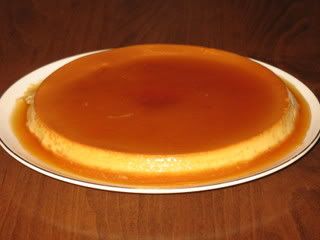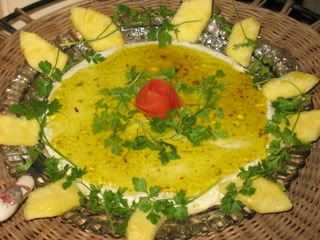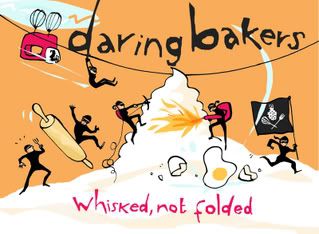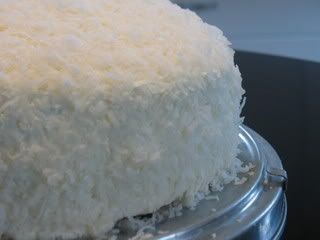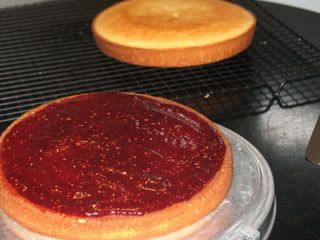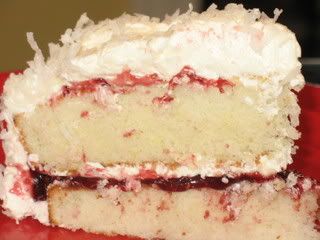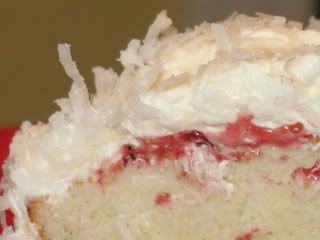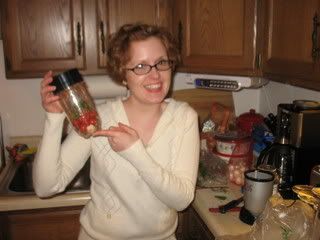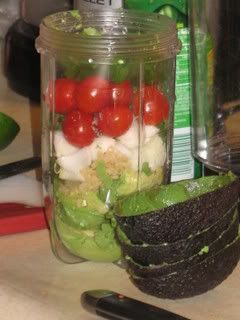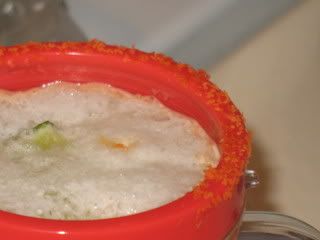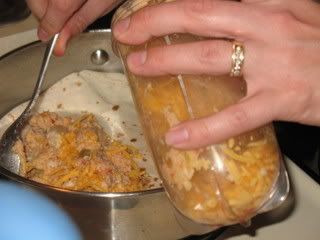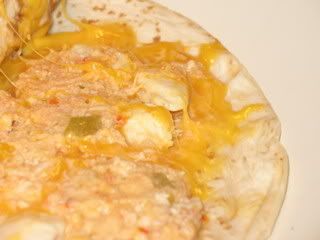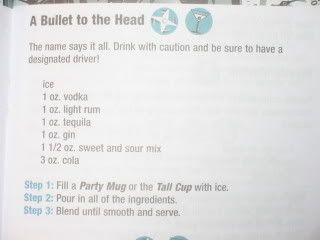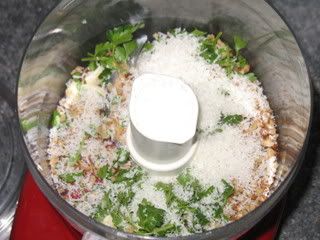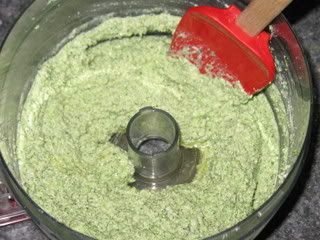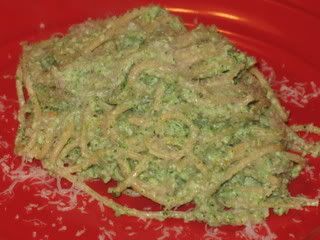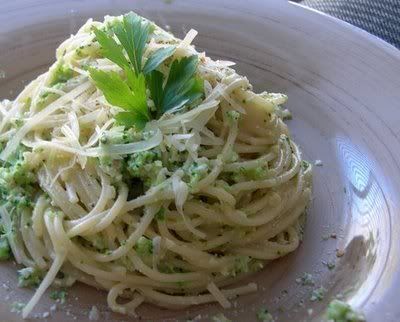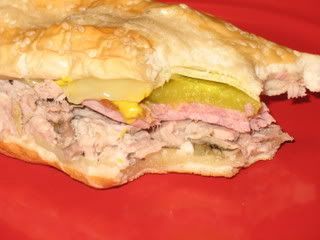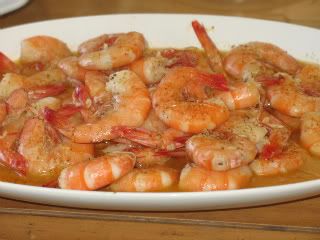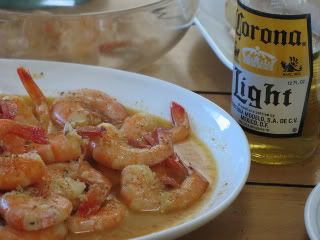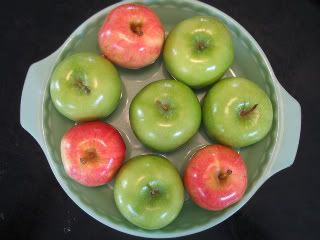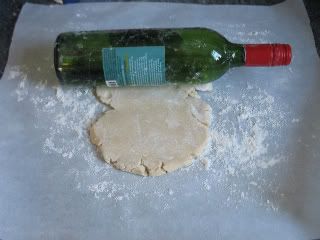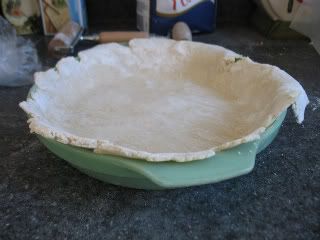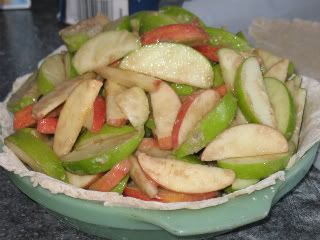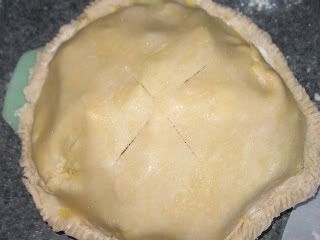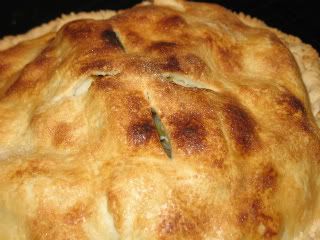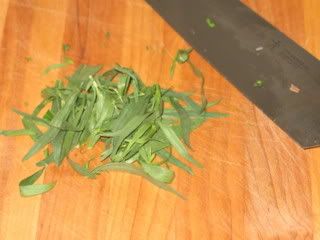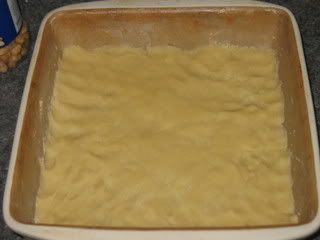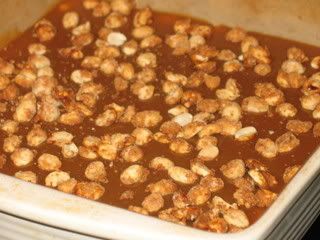This week's Tuesdays with Dorie recipe was chosen by Stephanie of A Whisk and a Spoon. I was excited that the recipe was for something I'd never made before...FLAN!
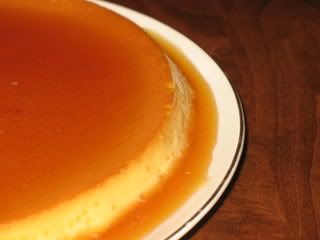
I actually have a bit of history with the flan. I think I've always been a foodie at heart, because in school I used to always be fascinated with the foods sections of our health textbooks. Then, when I took Spanish classes in high school, I loved browsing the food chapter. That's where I first discovered flan. I remembered seeing flan on the menu at Mexican restaurants, but not really understanding what it was. After taking Spanish, I wanted to try flan so bad! I finally talked my parents into letting me order it when we were out to dinner one night. My mom said I wouldn't like it. She said it had the consistency of snot. I wanted to try it anyway. And, she was right. I didn't like it at all!
Many years later, I was having dinner at my best friend's house, and she had made flan for dessert. "Ugh," I moaned. "I hate flan!" But, my tastebuds and sensibilities had changed with age, and the adult me really liked the flan.
All in all, flan is a fairly easy dessert to make. I was worried, however, when I took the flan out of the oven as it seemed a bit too jiggly. You see, I don't think my oven's temperature is accurate (I know, I know...I need to get an oven thermometer), and I usually cook things a lot less than required.
The flan was no different. The recipe says to bake it "until the top puffs a bit and is golden here and there," about 35 minutes. Well, after only 20 minutes, my flan was puffed and golden--on the verge of burnt--so I took it out of the oven.
After chilling, the flan moved around in the pan easily but seemed to be set. The caramel was very runny--not thick and caramel-like--but had a nice sweet, toasted flavor. The custard set perfectly.
Caramel-Topped Flan- makes one 8″x2″ flanfrom Dorie Greenspan’s
Baking: From My Home to Yours
Note: You can make individual servings by using six 6-oz or seven or eight 4-oz ramekins or containers instead of the larger cake pan.
For the caramel:
1/3 cup sugar
3 tablespoons water
squirt of fresh lemon juice
For the flan:
1 1/2 cups heavy cream
1 1/4 cups whole milk
3 large eggs
2 large egg yolks
1/2 cup sugar
1 teaspoon pure vanilla extract
Getting ready:
-Center a rack in the oven and preheat the oven to 350ºF. Line a roasting pan or 9″x13″ baking pan with a double thickness of paper towels. Fill a teakettle with water and put it on to boil; when the water boils, turn off heat.
-Put a metal 8″x2″ round cake pan– not a nonstick one– in the oven to heat while you prepare the caramel. (If you are using individual molds or ramekins, then skip this step.)
To Make the Caramel:
-Stir the sugar, water and lemon juice together in a small heavy-bottomed saucepan. Put the pan over medium-high heat and cook until the sugar becomes an amber-colored caramel, about 5 minutes-remove the pan from the heat at the first whiff of smoke.
-Remove the cake pan from the oven and, working with oven mitts, pour the caramel into the pan and immediately tilt the pan to spread the caramel evenly over the bottom; set the pan aside.
To Make the Flan:
-Bring the milk and heavy cream just to a boil.
-Meanwhile, in a 2-quart glass measuring cup or in a bowl, whisk together the eggs, yolks and sugar. Whisk vigorously for a minute or two, and then stir in the vanilla. Still whisking, drizzle in about one quarter of the hot liquid-this will temper, or warm, the eggs so they won’t curdle. Whisking all the while, slowly pour in the remainder of the hot cream and milk. Using a large spoon, skim off the bubbles and foam that you worked up.
-Put the caramel-lined cake pan in the roasting pan. Pour the custard into the cake pan and slide the setup into the oven. Very carefully pour enough hot water from the kettle into the roasting pan to come halfway up the sides of the cake pan. (Don’t worry if this sets the cake pan afloat.) Bake the flan for about 35 minutes, or until the top puffs a bit and is golden here and there. A knife inserted into the center of the flan should come out clean. (Small, individual molds will take less time– start checking for doneness around the 25-minute mark).
-Remove the roasting pan from the oven, transfer the cake pan to a cooking rack and run a knife between the flan and the sides of the pan to loosen it. Let the flan cool to room temperature on the rack, then loosely cover and refrigerate for at least 4 hours.
-When ready to serve, once more, run a knife between the flan and the pan. Choose a rimmed serving platter, place the platter over the cake pan, quickly flip the platter and pan over and remove the cake pan–the flan will shimmy out and the caramel sauce will coat the custard.
Storing: Covered with plastic wrap in its baking pan, the flan will keep in the refrigerator for up to 2 days. However, once unmolded, its best to enjoy it the same day.
Serving: Bring the flan to the table and cut into wedges. Spoon some of the syrup onto each plate.
Playing Around– Caramel-topped coconut flan: For a more tropical flan with a somewhat lighter texture, replace the heavy cream with a 15-oz can of unsweetened coconut milk and reduce the amount of milk to 1 cup.
